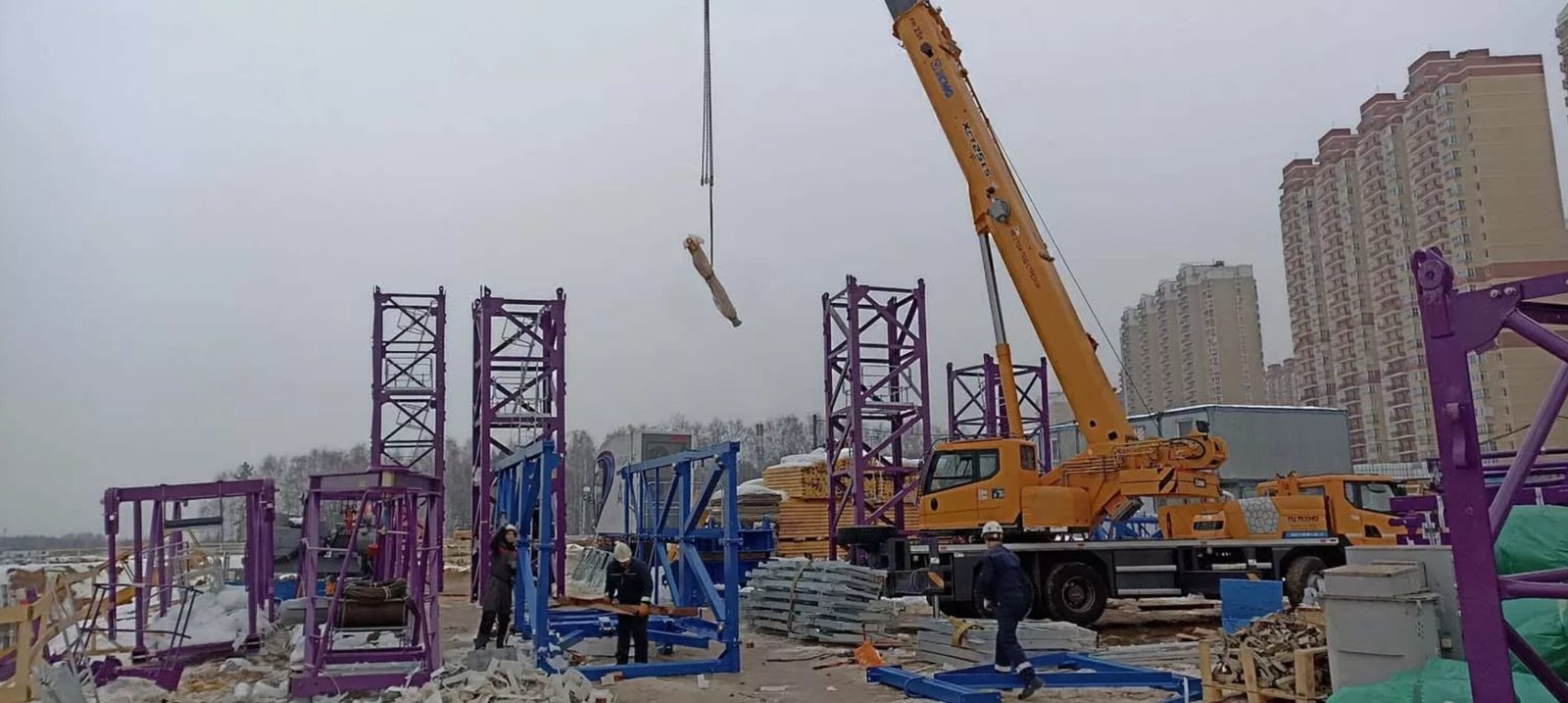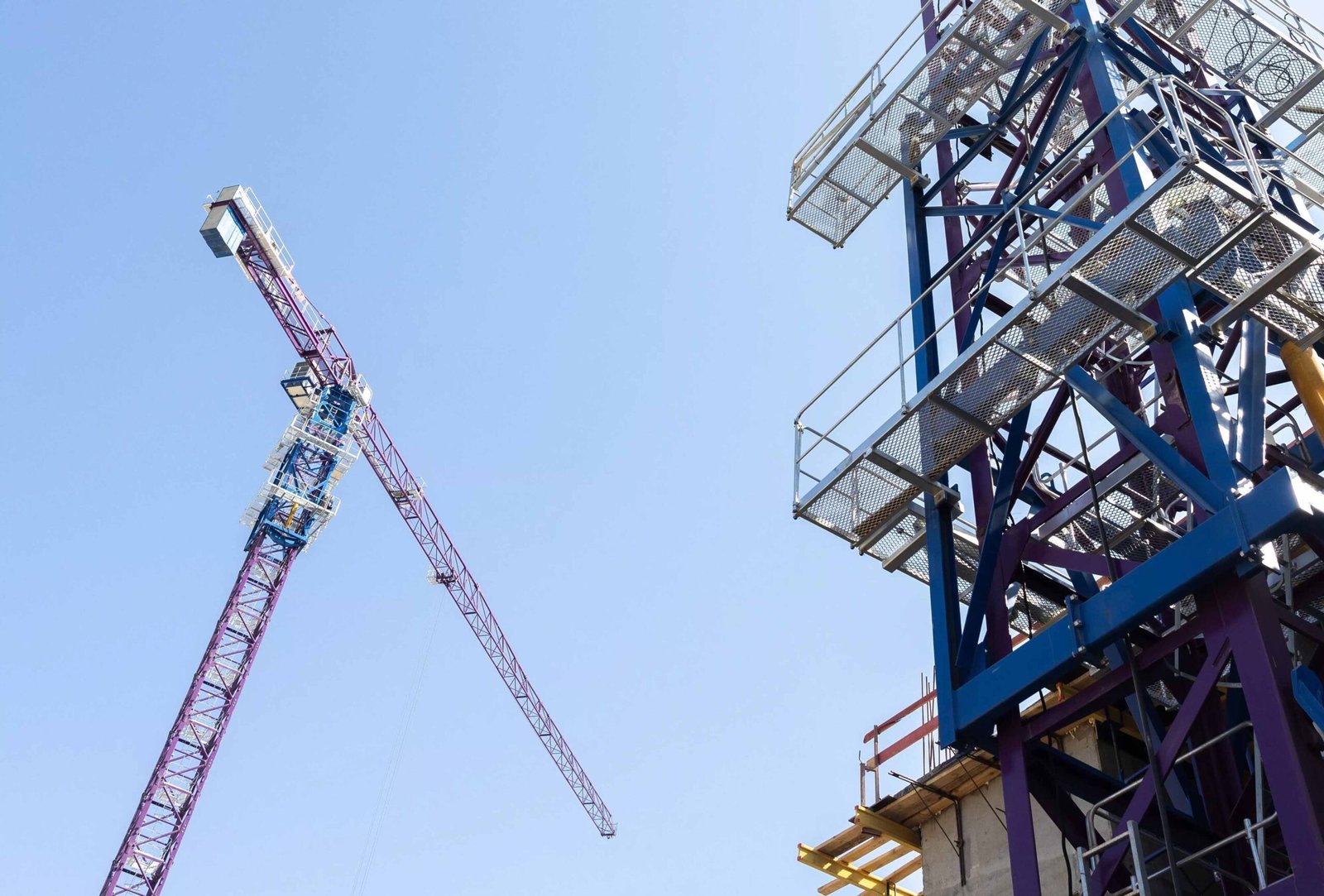
Have you ever wondered how massive tower cranes1 manage to get to the top of towering skyscrapers? These giants, often towering hundreds of meters into the sky, are vital for lifting heavy materials during the construction of tall buildings. But how do they get there, and how do they stay standing without toppling over? Let’s take a closer look at how these cranes make their way to the top, how they remain stable, and how they’re installed in the first place.
Getting tower cranes to the top of tall buildings involves sophisticated techniques. They are carefully installed and remain stable through careful engineering and counterweights.
In this article, we’ll explore how tower cranes are set up for skyscraper construction, their stability, and the process of getting them to such extreme heights.
How do tower crane operators get to the top?

Tower crane operators are responsible for controlling these giant machines, but how do they reach the top of the crane? Since tower cranes are often placed on the roofs of tall buildings, operators need a safe and efficient way to get there. The process of reaching the crane’s cockpit, which can be hundreds of meters above the ground, is both fascinating and complex.
Most tower cranes are equipped with a climbing mechanism, a system that allows the crane to rise as the building itself grows taller. This mechanism is made up of hydraulic jacks and climbing frames, which lift the crane incrementally as construction progresses. When the crane is first installed, it's typically built up from the ground to a certain height using a mobile crane, and then it begins climbing as the building's floors are added.
Once the crane reaches the desired height, operators enter the cockpit via an elevator built into the crane's tower. In some cases, operators may climb a ladder or use a personal climbing harness to get to the top, depending on the crane’s configuration.
In situations where the crane is initially assembled on the ground, a climbing frame is used to raise the crane’s mast section by section. Once the crane is installed, operators enter the control cabin, often with the help of a hydraulic lift that brings them up as the crane's height increases.
Safety Measures for Crane Operators
| Method | Description |
|---|---|
| Hydraulic Climbing | Allows crane to rise with building |
| Lifting Platforms | Hydraulic lifts bring operators to the top |
| Climbing Frames | Mast sections raised incrementally |
The safety of the crane operator is paramount, and measures like harnesses, secure platforms, and safety lines are always in place to protect them during both the installation and operation phases.
How does a tower crane not fall over?

A tower crane might look precarious with its enormous height and narrow base, but it doesn’t fall over because of the engineering that goes into its design. Tower cranes are incredibly stable due to the combination of their weight, counterweights, and the way they're anchored to the building or ground.
At the base of a tower crane, large concrete counterweights2 are used to balance the crane’s massive lifting capacity. These counterweights prevent the crane from tipping over while lifting heavy loads. The heavier the load the crane is lifting, the more counterweight is required to ensure stability. In fact, some cranes can have counterweights weighing as much as 100 tons or more.
Additionally, the tower crane is anchored securely into the building or onto a foundation pad on the ground. When used on a tall building, the crane's base is often anchored to the core of the structure, providing stability as it lifts materials.
Key Stability Factors
| Stability Factor | Impact |
|---|---|
| Counterweights3 | Balance the crane's weight |
| Anchor Points | Provide firm connection to structure |
| Distribution of Weight | Prevents tipping or instability |
Without these features, a tower crane could not withstand the forces generated by lifting heavy loads at great heights. This careful balance of weight distribution and countermeasures keeps tower cranes safely in place during construction projects.
How do they install skyscraper cranes?

Installing a crane on a skyscraper is an intricate and highly specialized process. It requires both heavy machinery and expert planning to ensure the crane is safely and correctly positioned. There are a few key steps involved in the process.
-
Pre-installation Setup: Before installation, a mobile crane4 or large flatbed truck is often used to transport the crane's components to the construction site. The crane’s parts are delivered in sections, including the mast, boom, counterweights, and the cab.
-
Initial Setup: A mobile crane is used to lift the lower portion of the tower crane into place. This part is typically anchored into the building’s foundation or the ground, depending on the type of crane being used.
-
Climbing Frame Installation: Once the crane’s base is in place, a climbing frame is used to raise the crane’s mast. This climbing mechanism will allow the crane to keep ascending as the building grows taller.
-
Completion: After the tower crane is in place, it’s carefully inspected to ensure everything is secure. The crane is now ready to begin lifting materials to the top of the building.
Step-by-Step Crane Installation
| Step | Description |
|---|---|
| Pre-installation Setup | Mobile crane delivers components to the site |
| Initial Setup | Mobile crane lifts the base section into place |
| Climbing Frame Setup | Hydraulic jacks raise the mast incrementally |
| Final Checks and Testing | Ensures the crane is secure and functional |
In some cases, specialized high-rise cranes are used for installing cranes on tall skyscrapers. These high-rise cranes are designed specifically to handle the demands of lifting heavy materials during the crane installation process.
What stops the crane from falling over?

So, how does a tower crane remain standing during construction, especially in extreme wind conditions or when lifting massive weights? The stability of tower cranes is the result of careful design, multiple safety mechanisms, and continuous monitoring.
-
Counterweights: As mentioned earlier, counterweights are one of the main factors in preventing tower cranes from toppling over. These heavy blocks are placed on the opposite side of the crane’s lifting arm to counterbalance the weight of the load being lifted.
-
Anchoring: The base of the crane is anchored to the building or the ground to ensure it stays in place. In the case of skyscrapers, the crane is typically bolted directly to the building’s foundation, which is specifically designed to withstand the forces created by the crane.
-
Load Monitoring5: Modern tower cranes come equipped with load-monitoring systems that track the weight being lifted and ensure that the crane does not exceed its lifting capacity. If the load is too heavy or out of balance, the system will trigger an automatic shutdown to prevent accidents.
-
Wind and Weather Monitoring: Tower cranes are equipped with sensors that monitor wind speeds and weather conditions. If the wind exceeds safe limits, the crane will be automatically shut down to prevent accidents caused by strong gusts of wind.
Key Stability Features
| Feature | Purpose |
|---|---|
| Counterweights | Balance crane’s load |
| Anchoring | Secure crane to structure |
| Load Monitoring | Prevent overload accidents |
| Weather Sensors | Ensure crane stops in high winds |
By carefully balancing these factors, tower cranes are able to remain stable and secure, even during challenging construction conditions.
Conclusion
Tower cranes are an incredible feat of engineering. They get to the top of skyscrapers through a combination of hydraulic climbing systems, mobile cranes, and precise installation methods. Once in place, they remain stable thanks to counterweights, anchoring systems, and advanced monitoring technologies, allowing them to lift heavy loads without the risk of toppling over.
-
Understand the importance and function of tower cranes in construction projects. ↩
-
Explore how counterweights help maintain the stability of tower cranes during lifting. ↩
-
Learn how counterweights contribute to the stability of tower cranes. ↩
-
Understand the role of mobile cranes in transporting and assembling tower cranes. ↩
-
Learn about the technology behind load-monitoring systems in tower cranes for safe operation. ↩






